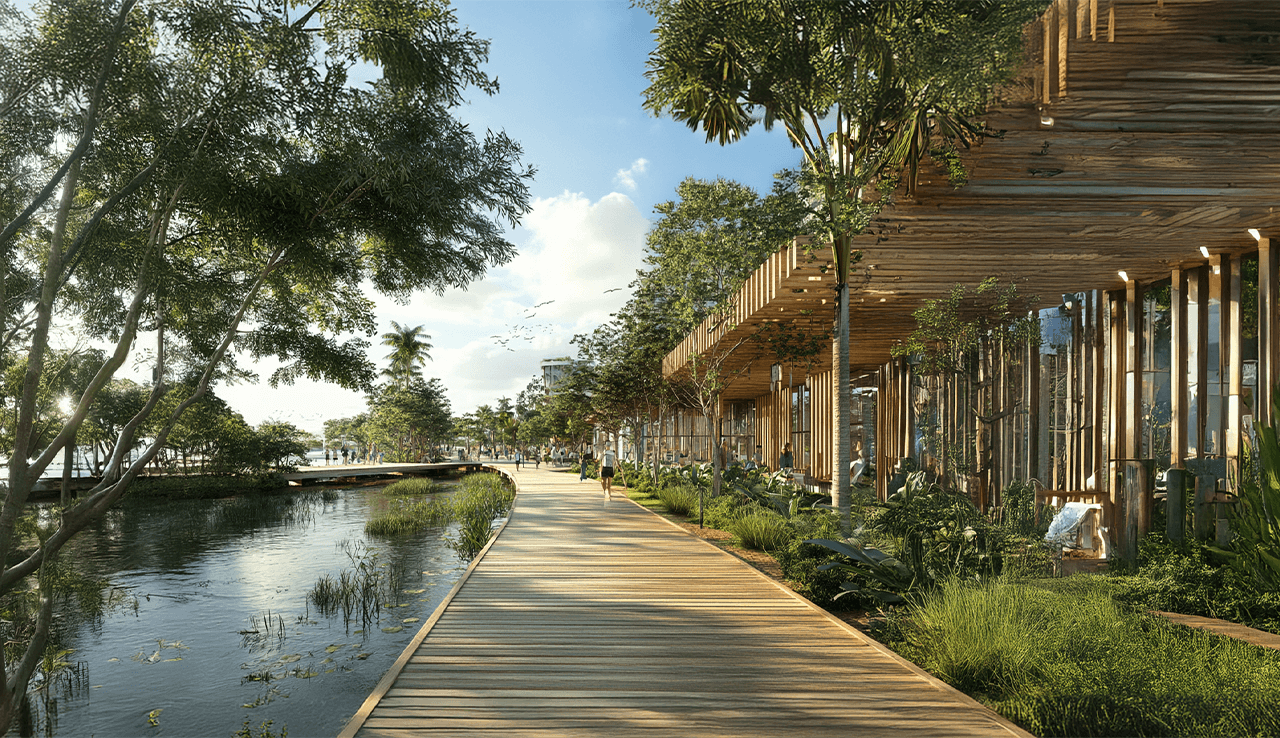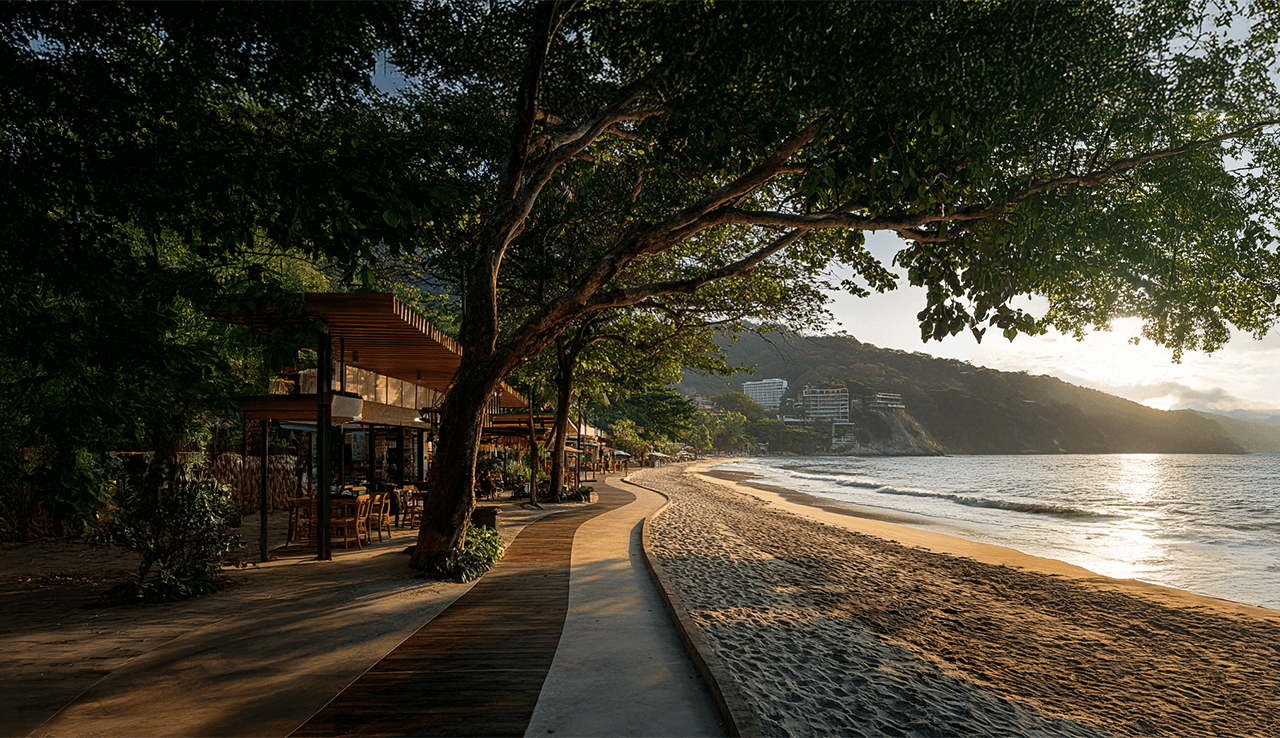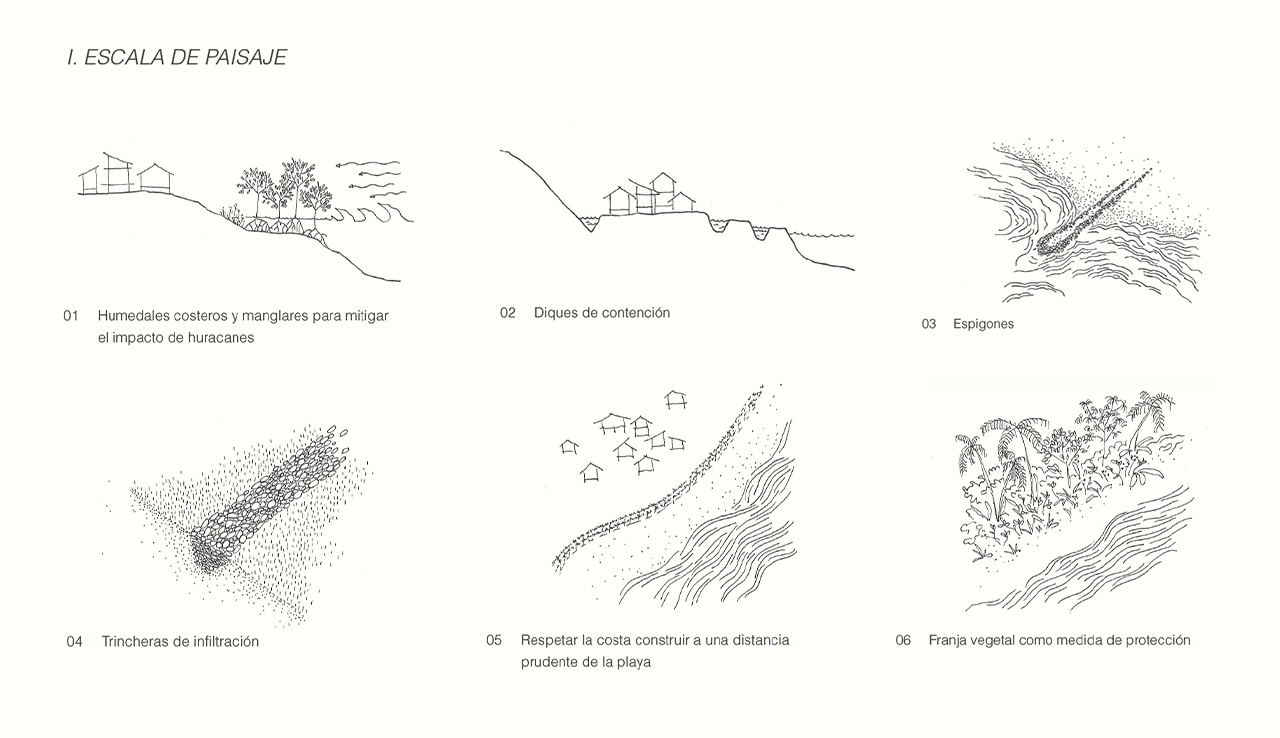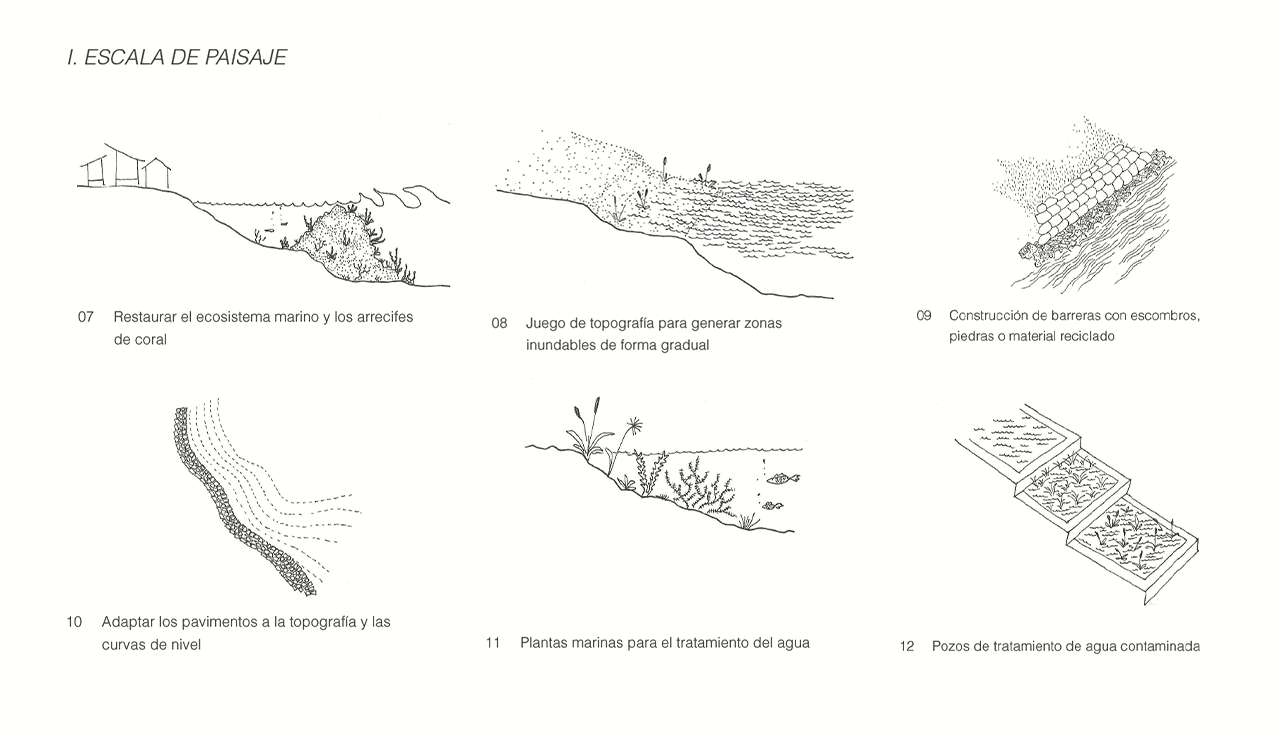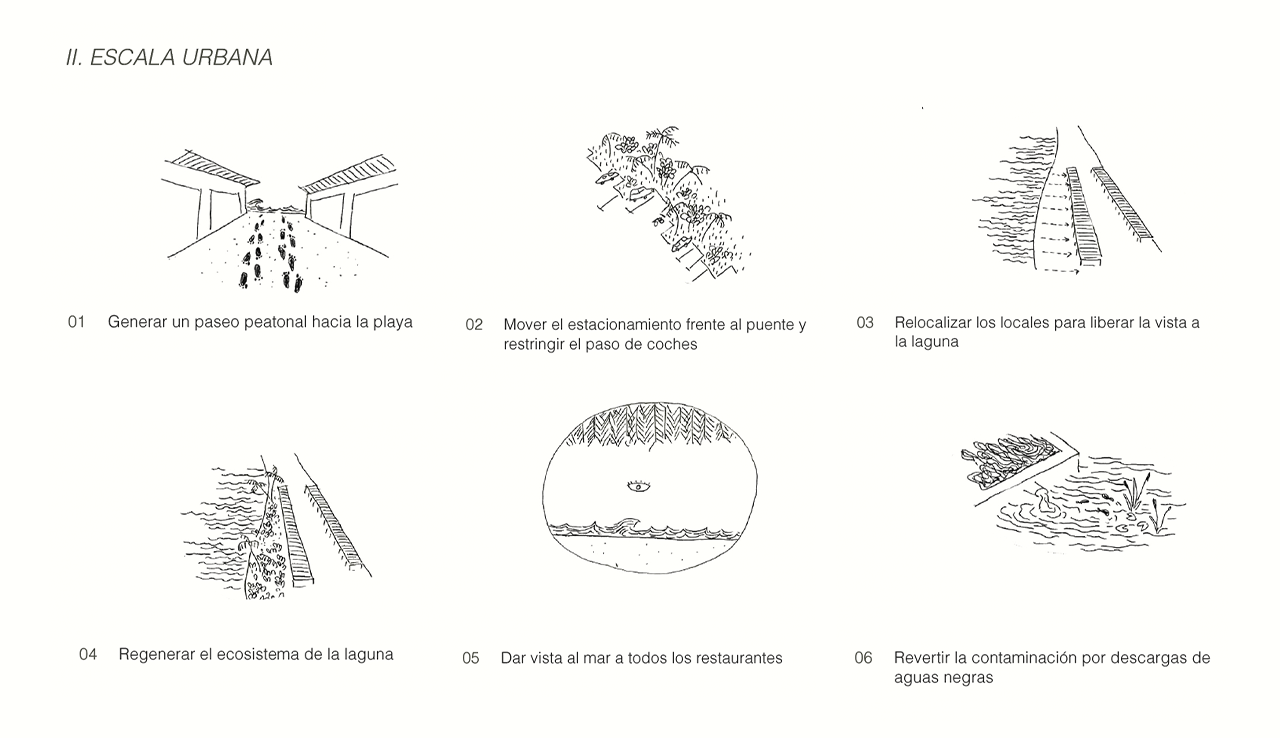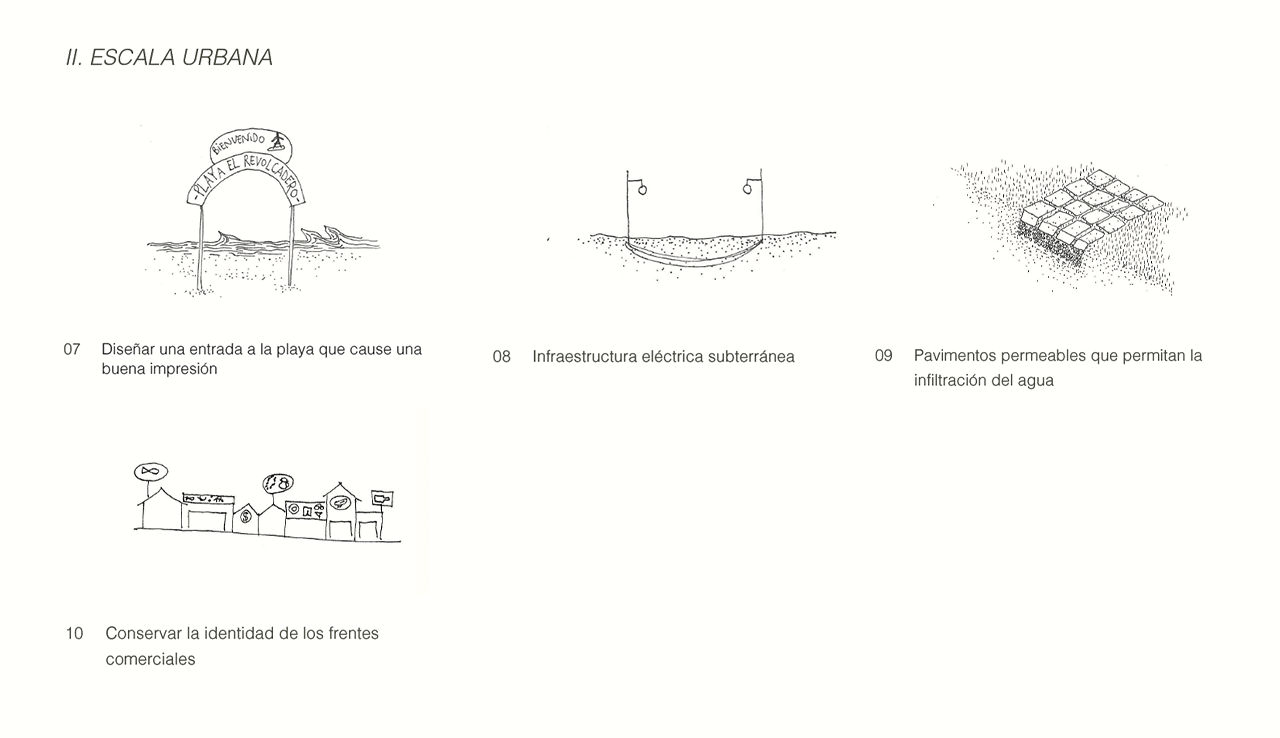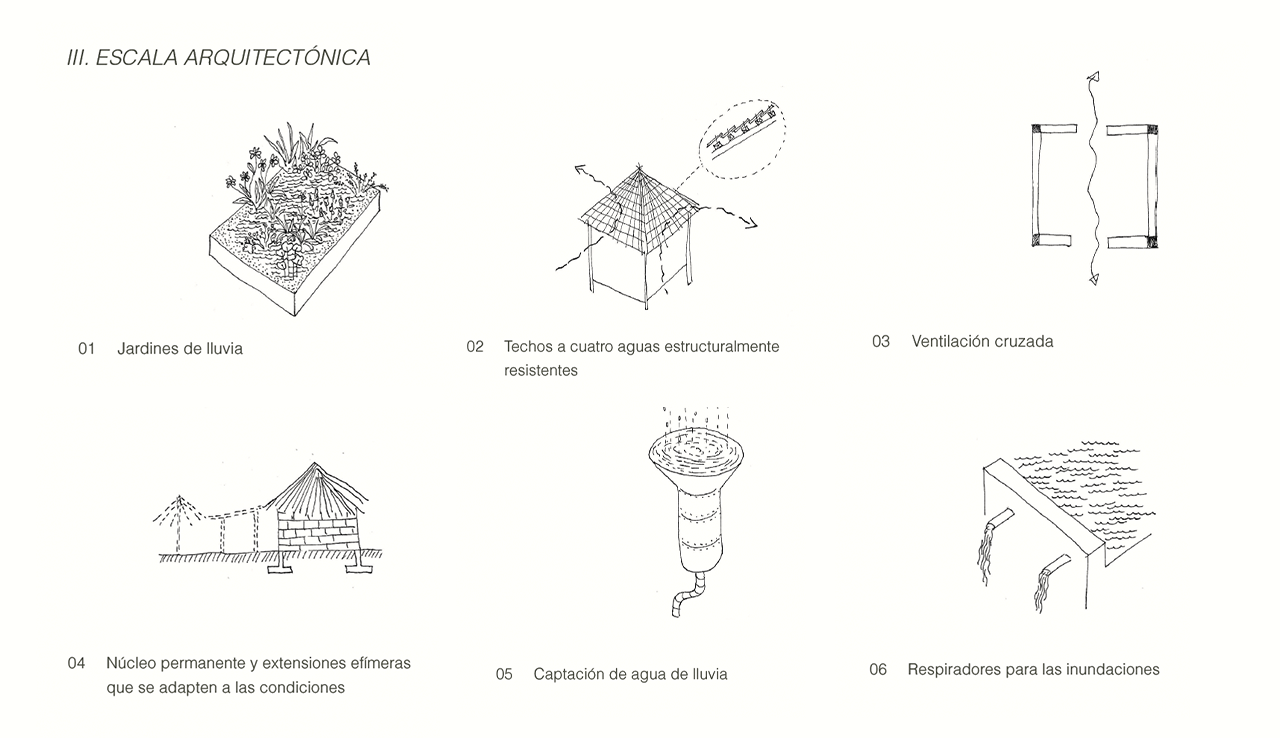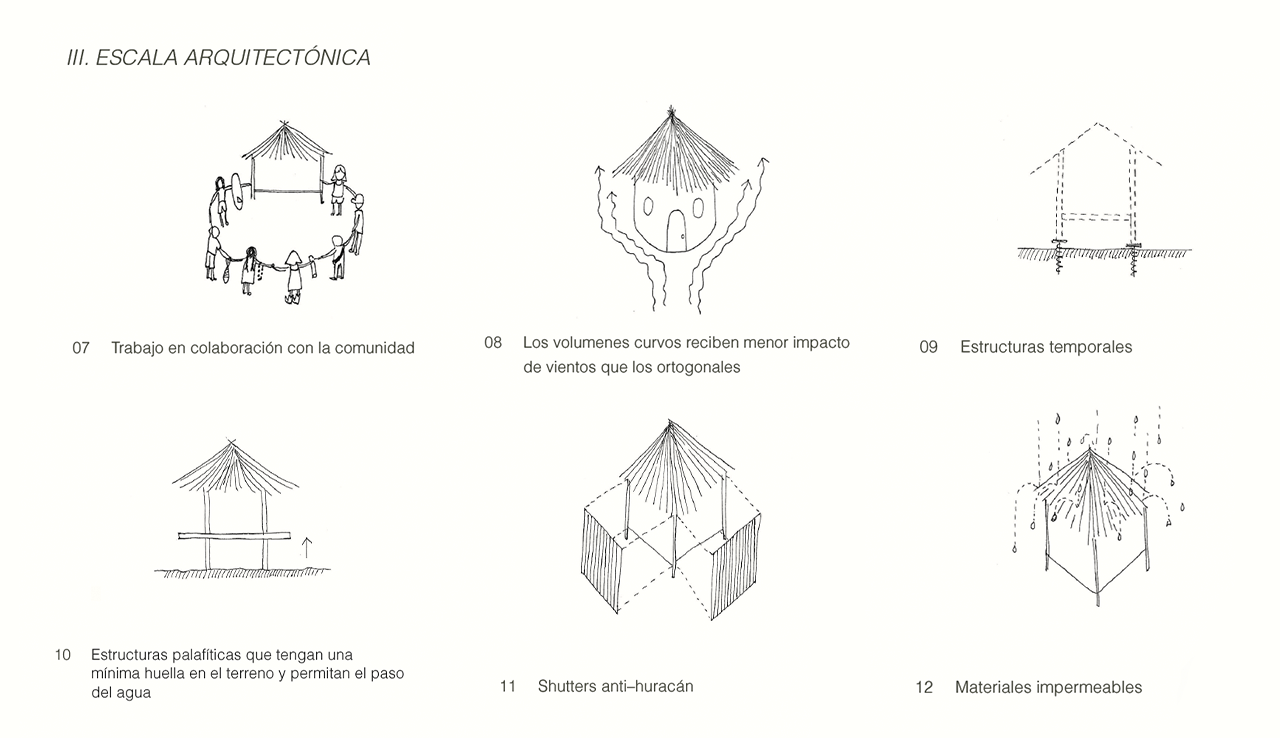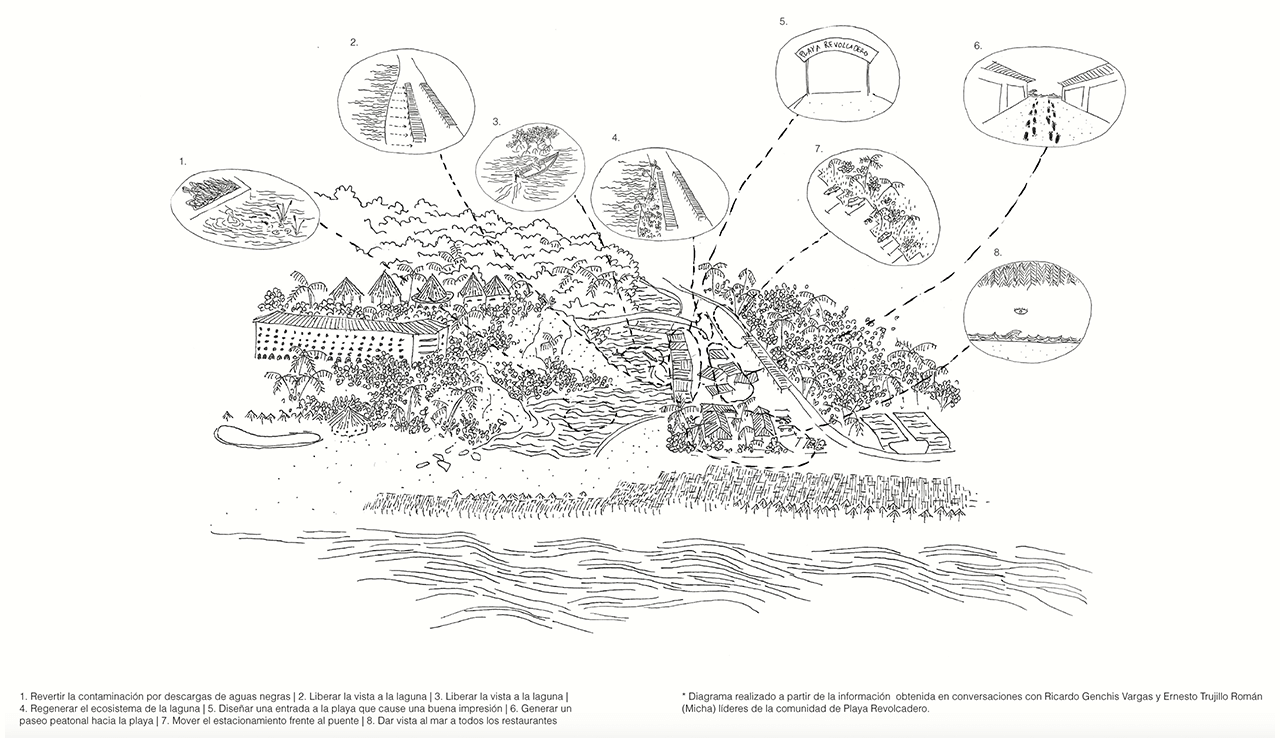Revolcadero Beach: Regenerative and Reconstruction Actions
Acapulco is an urban context in constant transformation whose history is based on its symbiotic relationship with the coast and the sea. Currently, Revolcadero Beach, the end of Acapulco Diamante, one of the most developed tourist areas in the city, faces a major problem of seawater contamination from the Laguna Negra de Puerto Marqués.
Additionally, together with the ravages of the recent hurricane Otis, this site has been a scenario where the socio-cultural, environmental-territorial and economic-productive dimensions that are interrelated in the habitat, have gone unnoticed due to the social and environmental problems that arise in this context.
Based on the reading of the place, the following key points are taken up again:
- Revolcadero's economy depends on tourist activity and local commerce.
- Hurricane Otis caused serious economic difficulties for all the merchants in the sector, damaging their main source of work and income.
- Revolcadero has become a destination for mass economic tourism, showing a lack of interest in complying with sanitation regulations and encouraging the homogenization of economic activities.
-
Revolcadero is located in a strategic area where different hotel and high-income housing developments converge.
The beach and natural mangrove landscape have deteriorated due to the excessive presence of garbage and the discharge of sewage from 32 properties in the lagoon area.
Based on the above, Eduardo Gorozpe Fernández, founder of A-001 Taller de Arquitectura, architect Rozana Montiel and liaison actors with the Revolcadero Beach community, collaborate in a multidisciplinary initiative that starts from participatory processes of research and territorial understanding in order to detonate a design focused on people and their needs, making architecture a catalyst for change that accompanies the inhabitants of Revolcadero in the production, management and spatial development of their territory.
The objective of this collaboration is:
- Consolidate the image of Revolcadero Beach as a reference in the region for its ability to weave a productive ecosystem with its context from its relationship with water both with the estuary and the sea.
- To seek the political will so that the institutions make possible the recovery of this space.
Based on this, the systemic research with which this project is detonated, understands Revolcadero as a living and evolving system, as a network of multidisciplinary and complementary relationships, where the understanding of “inhabiting” is interwoven with the different actors, interactions, scales, and histories. Thus, the proposal consists of an intervention that recovers the notion of the ecosystem at the landscape, urban and architectural scales, giving rise to an ecotone, a place where the public and private spheres merge harmoniously; where the transition from an open to a closed space is attenuated; a node that allows a balanced coexistence between the built areas and the natural regions.
Among the most relevant strategies, at the landscape scale, the vegetation strip of coastal wetlands and mangroves to mitigate the impact of hurricanes as a protective measure, the play with topography to gradually generate flood zones and wells for the treatment of contaminated water with marine plants stand out. In turn, on the urban scale, the regeneration of the lagoon's ecosystem by reversing the pollution caused by sewage discharges, the relocation of local businesses to free the view of the lagoon and give a sea view to all the restaurants, and the creation of a pedestrian walkway and an entrance to the beach that makes a good impression.
Finally, on the architectural scale, strategies such as the implementation of permanent cores and ephemeral extensions of vernacular typologies such as structurally resistant hipped roofs, ephemeral and stilted structures with impermeable materials that adapt to the conditions, and bioclimatic strategies such as cross ventilation, hurricane shutters, and rainwater collectors, thus spatializing proposals for a more resilient architecture in the face of changing climatic conditions that are the result of collaborative work with the community.
Thus, through localized and singular actions of regeneration and reconstruction, Rozana Montiel and Eduardo Gorozpe propose new ways of conceiving and making a spatiality that opens the possibility of new forms of intersubjectivity and community conformation in the different habitable scales, making possible a redemption of inhabiting, and making architecture a tool that potentiates spatiality and shares wellbeing with the populations and actors that have inhabited, inhabit and will inhabit the space.
Investigation Team: A-001 Taller de Arquitectura, Rozana Montiel Estudio de Arquitectura
